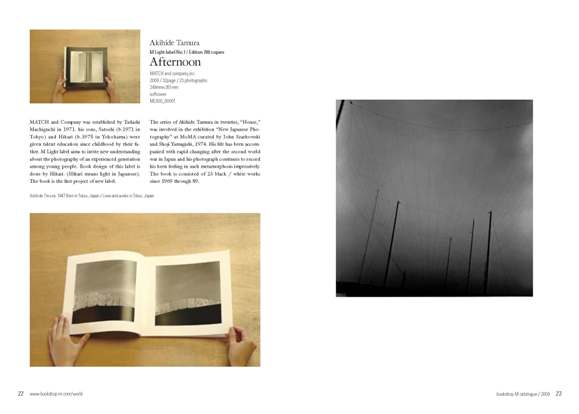eyecurious has made a slow start to blogging in 2010. However, this was due to a great, albeit far too short trip to Tokyo. I was in Japan preparing two exhibitions that will open in Stockholm, Sweden and in Cologne, Germany in March of this year (more on these in the coming weeks) and laying the groundwork for a third, but as usual Tokyo afforded its fair share of surprises.
Exhibition-wise the first week of January is not the best in Tokyo or elsewhere for that matter, but I did manage to stumble across some good things. I only saw one museum show, the Tokyo Metropolitan's joint Ihee Kimura and Henri Cartier-Bresson exhibition (on until 7 February 2010). This isn't exactly ground-breaking stuff, but it does provide an interesting new perspective on these two masters of the Leica and illustrates just how different their styles were. Kimura's photographs will probably be less familiar to non-Japanese readers, but given my focus on Japanese photography they are as familiar to me as HCB's. Kimura was a furious snapper and often photographed his subjects from many different angles, however his pictures retain a much looser, natural quality than Cartier-Bresson's. After walking through three rooms of Kimura, the Frenchman's compositional rigour and prowess is both impressive and a little bit overwhelming. So many of HCB's images are works of complete virtuosity, but after several rooms worth of such masterpieces I am left craving more open and less controlled pictures. The best part of this show is the final room in which the two photographers' annotated contact prints are displayed side by side. These provide a fascinating insight into the genesis of some now legendary images, revealing before and after outtakes and proving that while HCB may not resort to any cropping he didn't always get the image he was looking for in a single exposure.

Aside from this blockbuster show I managed to take in a minuscule Daido Moriyama show at NADiff Gallery (the first time I have seen any of Moriyama's colour work), Hajime Sawatari's very hot but a little vacuous Kinky at BLD Gallery, the final days of an exhibition by promising young Chinese photographer Muge at the recently opened Zen Foto, and an exhibition of new work by the ubiquitous Araki which had several images with absolutely no signs of bondage in them!
The highlight in terms of exhibitions turned out not to be a photography show. The French Embassy has relocated to a new building in Tokyo and they have given over Joseph Belmont's 1957 building over to a group of over 70 Japanese and French artists from all kinds of different disciplines (sculpture, video, graffiti, calligraphy, design, photography, etc.) for a 'carte blanche' exhibition of work inspired by the building itself and integrating its contents into the works. The results are predictably hit and miss but they are always interesting and the experience is exhilarating. The proof of No Man's Land success for me was the audience: this was the busiest exhibition I saw in Tokyo and the visitors came in all ages, shapes and sizes, including a group of a dozen octogenarian grandmothers who were thoroughly enjoying themselves. This is the kind of open, interactive art initiative that we need more of. The show is on until 31 January 2010, so if you're in Tokyo do not miss it.

Throw in a meeting with master book designers (and brothers) Satoshi and Hikari Machiguchi of Match and Company, a visit to one of the only remaining analog photo-labs hidden away in a tiny basement where a handful of master printers appear to be making most of the best fine art prints coming out of the Tokyo photo world, a few hours in the unmissable Sokyu-sha bookstore, and a highly entertaining few hours at Gallery Tosei with Dan of Street Level Japan and Kurt of Japan Exposures and you have the recipe for another terrific week in Tokyo. Tosei is first and foremost a publishing house, but they opened a small gallery in their offices about five years ago, the first I've been to where you have to take your shoes off to come in. Tosei's head honcho, Takahashi-san, is a force of nature and his riffs on the state of photography and some of its practitioners are both fascinating and completely hilarious.
